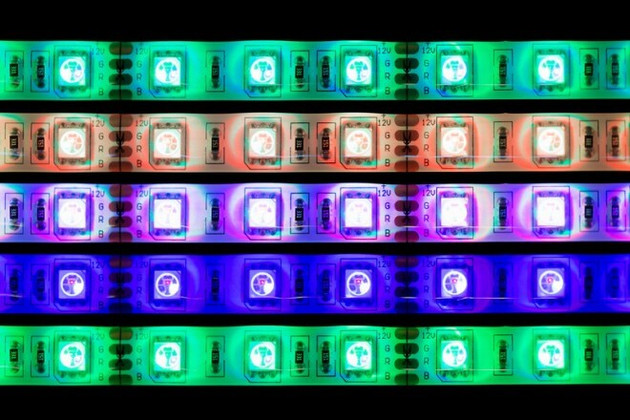The Evolution of LED Strip Lights
Posted by Birddog Lighting on Dec 21st 2016
The history of electric lighting dates back to the late 1800s and the invention of the light bulb. Although it would still be decades before the average home enjoyed electric lighting as a matter of course, the utility and convenience of this invention would come to change the way people lived, allowing us to squeeze more hours of activity into every day.
Of course, we can improve nearly every invention, and lighting is no exception. In 1962, a scientist name Nick Holonyak, Jr. working for GE created the first light emitting diode (LED), or at least the first practical, visible model similar to the ones we use today. Incredibly, he did this while attempting to create a semiconductor laser.
At the time, he probably didn’t know what his invention would become. He likely never imagined that one day LEDs would be the premiere, energy-efficient form of home and commercial lighting. With the first LEDs selling for over $200 each, they certainly weren’t in the price range of most consumers. And yet, Holonyak anticipated that LEDs would one day replace traditional incandescent bulbs. In a 2012 interview he stated that he just didn’t expect it to take so long for LEDs to catch on.
How did the LEDs we use today evolve from their humble beginnings and how did they go from the go-to for digital clocks to the bulbs, rope lights, and strip lights that are now as common as gas lamps once were?
How LEDs Work
Before we can understand how LEDs became so popular, it’s important to know how they work, mainly because they are so different from incandescent lighting. Incandescent lights, for example, pass electrical current through a filament that heats up and glows, giving off light.
A light emitting diode, on the other hand, is a semiconductor that releases photons (light) as a side effect of forcing the movement of electrons with electric current. As such, it creates no heat. All you have to do is get near an incandescent bulb that has been on for a while to feel the heat it puts off. LED bulbs have no such issues. They also require a lot less electricity to produce the same amount of light as an incandescent bulb.
Even with the advantages inherent to LED technology, however, it would still be many years before these lights became popular for common lighting products we use today. Why did it take so long to conceive of using LEDs in light bulbs, televisions, and strip or rope lights?
Holonyak’s Invention
Holonyak first devised the LED as a laser technology that just happened to produce visible light. The low-intensity infrared light he originally conceived is still used today. If you have a remote for your television or other home electronics, you’ve seen it in action.
Unfortunately, there weren’t a lot of practical applications for LEDs at the time because they were so expensive to produce, and initially, only available in red. Commercial development continued throughout the 1960s, with advances made in the colors. However, the products were too expensive and inefficient to effectively appeal to a consumer market.
T. P. Pearsall
In the mid-’70s, T. P. Pearsall was experimenting with new semiconductor materials to find ways to adapt LED technology for use in optical fiber transmissions for telecommunications. He ended up creating the first LEDs that paired intense brightness with higher efficiency.
Even so, it would still be quite a while before LEDs left the realm of indicator lamps and commercial applications. It would be many years before LEDs became a viable consumer light source. Why? Perhaps because no one saw a real need to improve on incandescent lighting. Maybe it just took longer than anticipated to develop inexpensive and energy-efficient consumer models.
LEDs Today
The good news is that the slow progression of this technology has finally paid off. Today, we enjoy LED options not only in clocks and remote controls, but in TVs and computer monitors, as well as in every light fixture.
Additionally, we have products like rope and strip lights that we can hook up to sensors, dimmers, and other controls for both practical and aesthetic purposes. It took decades for LEDs to reach the superior status they enjoy today, but thankfully consumers now enjoy the safe, efficient lighting only LEDs can provide.



